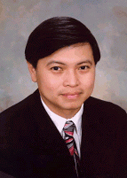Prof. Nam Ling received a B.Eng. degree in Electrical Engineering from the National University of Singapore (NUS). He received M.S. and Ph.D. degrees, both in Computer Engineering, from the University of Louisiana at Lafayette, U.S.A. Prof. Ling is currently a full Professor of Computer Engineering and the Associate Dean for Research and Faculty Development for the School of Engineering at Santa Clara University (SCU), California, U.S.A. He is also a Consulting Professor for the NUS Overseas Colleges. He has served as Visiting Professor/Consultant/Scientist/Scholar to many institutions and as Collaborator/Consultant to several companies.
Prof. Ling is an IEEE Fellow due to his contributions to video coding algorithms and architectures. He has more than 130 publications in the fields of video coding and systolic arrays. He is the primary author of the book entitled Specification and Verification of Systolic Arrays. He and his team’s method on fast motion estimation (SUMH or SFME) was adopted in 2005, and their Lagrange multiplier method (CALM) was adopted in 2006, both now part of the H.264/MPEG-4 AVC video coding international standard document and reference software. Prof. Ling received the Arthur Vining Davis Junior Faculty Fellowship (1991), the SCU Outstanding Achievement Award (1992), the SCU Engineering Researcher of the Year Award (2000), the SCU Award for Recent Achievement in Scholarship (2002), the SCU President’s Recognition Award (2005), and the SCU Award for Sustained Excellence in Scholarship (2007). He was named IEEE Distinguished Lecturer for 2002-2003 and 2007-2008. Prof. Ling also received the 2003 IEEE ICCE Best Paper Award (First Place Winner) for the work on MPEG-4 face animation, and part of the work was adopted by broadcasting organizations in the U.S.
Prof. Ling served as Keynote Speaker for the 2008 IEEE APCCAS and for VCVP 2008. He has also served as major speakers and panelists for several other conferences and seminars. Prof. Ling was the General Chair for the IEEE Hot Chips Symposium in 1995, a General Co-Chair for VCVP 2008, and was a Technical Program Co-Chair for the 2007 IEEE ISCAS. He also served as Technical Program Co-Chair for SiPS 2000, SiPS 2007, and DCV 2002. He was Track Co-Chair for ISCAS 04-06. Prof. Ling served as the Chair of the IEEE Computer Society Technical Committee (TC) on Microprocessors and Microcomputers in 1993-95, and the Chair of the IEEE Circuits and Systems (CAS) Society Circuits and Systems for Communications TC in 2006-08. He is also a member of the IEEE CAS Society TC on VSPC and a member of the IEEE Signal Processing Society DISPS TC. Prof. Ling served as an Associate Editor for the IEEE Transactions on Circuits and Systems - I in 2002-03. He was a Guest Editor for the Journal of VLSI Signal Processing Systems special issue in 2006 and is a Guest Editor for a coming special issue of JSPS. Prof. Ling served in program committees, organizing committees, and as session chairs for many IEEE conferences. He also served in the editorial boards of several technical journals. Prof. Ling has delivered more than 100 invited/distinguished/keynote colloquia in nine different countries.
Expectations and Challenges for Next Generation Video Compression
In the near future, significantly increase in resolution and perceptual quality will be expected for home and mobile video applications. With future devices and content moving toward high-definition (for mobile applications) and ultra-high-definition (for home applications), current AVC/H.264 technology will soon be unable to efficiently meet the compression demand for transmission. With the recent work from ISO/IEC MPEG high-performance video coding (HVC) and ITU-T VCEG groups, and the establishment of the Joint Collaborative Team (JCT), a new generation of video compression standardization process aiming at major improvements over the current AVC/H.264 standard has begun. In this talk, we will briefly look at the technology and applications of video compression from the past to the present, and into possible directions and challenges for the next five years. We will discuss key compression techniques and trends for future video coding efficiency, perceptual quality, and computational complexity.
